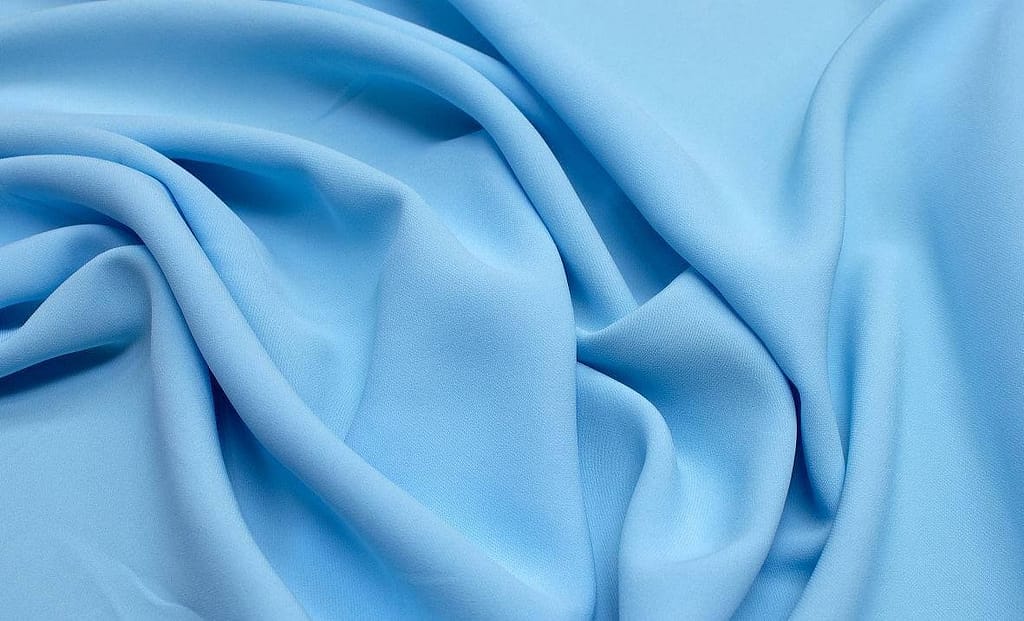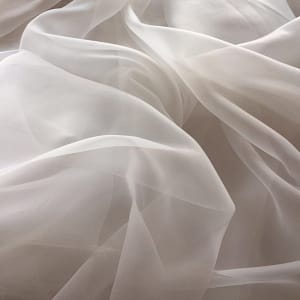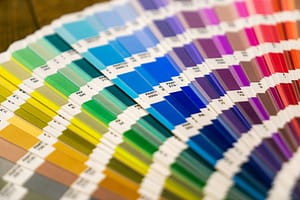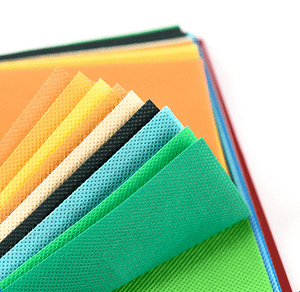Origins of Rayon Fabrics
The origins of rayon trace back to the late 19th century, when the demand for a silk substitute inspired innovation. French chemist Hilaire de Chardonnet pioneered the first artificial silk in the 1880s, using nitrocellulose extracted from plant materials. While groundbreaking, this method proved hazardous due to its flammability, earning the product the nickname “Chardonnet silk.” Despite its limitations, this invention laid the groundwork for developing more stable processes to produce artificial fibers.
In the early 20th century, advancements in chemistry led to the creation of safer production techniques utilizing regenerated cellulose. By 1924, the fiber was officially named “rayon,” derived from the word “ray” to signify its silk-like luster. Rayon quickly gained traction in fashion and manufacturing due to its affordability and versatility, marking a pivotal moment in textile history as the first semi-synthetic fiber.
What is Rayon Fabric?
Rayon is a semi-synthetic fiber made from natural cellulose, primarily sourced from wood pulp. Known for its versatility, rayon mimics the appearance and texture of natural fabrics like silk, cotton, and wool, offering a luxurious feel at a more affordable price. The fiber’s ability to blend seamlessly with other materials makes it a popular choice in various applications, from clothing to home textiles.
Unlike fully synthetic fibers, rayon retains the breathability and moisture-absorbing qualities of its natural origin. It is also highly adaptable, capable of being dyed in vibrant colors and engineered for different finishes and textures. These properties position rayon as a bridge between natural and synthetic fabrics, combining the best of both worlds to meet diverse consumer needs.
Characteristics of Rayon Fabrics
Rayon fabrics are prized for their exceptional softness and smooth texture, which closely resemble silk. This makes them incredibly comfortable to wear, especially in warm climates, as they are breathable and effectively wick away moisture. Rayon’s excellent drape enhances its appeal, allowing garments to flow elegantly and conform to the body’s contours. Additionally, the fabric takes dyes exceptionally well, producing vibrant, long-lasting colors that remain vivid through wear.
Key Features of Rayon:
- Softness and smooth texture, similar to silk.
- Breathable and moisture-wicking properties.
- Excellent drape, creating elegant, flowing garments.
- High dye affinity, resulting in vibrant and durable colors.
Despite its many advantages, rayon has certain limitations. It is prone to wrinkling and may shrink when exposed to excessive moisture if not treated properly. Moreover, while rayon is relatively durable under normal conditions, its fibers weaken when wet, requiring careful handling during washing. These characteristics highlight rayon’s dual nature: luxurious and functional, yet requiring mindful care to maintain its qualities.
Types of Rayon Fabrics
Rayon is available in several different forms, each with its unique characteristics and applications. The four most common types are viscose rayon, modal rayon, lyocell rayon, and cupro rayon, each produced using distinct methods and raw materials.

Viscose Rayon: The most common form, viscose is made by dissolving wood pulp in chemicals. It has a silk-like appearance and is used in clothing like dresses and blouses, as well as home textiles such as curtains.

Modal Rayon: Made from beech tree cellulose, modal is softer and more durable than viscose. It resists shrinkage and is often found in loungewear, activewear, and bedding due to its comfort and moisture-wicking properties.

Lyocell Rayon: Known for its eco-friendly production process, lyocell uses a closed-loop system that recycles chemicals. It’s stronger, softer, and wrinkle-resistant, making it ideal for everyday clothing and sustainable fashion.

Cupro Rayon: This luxurious type of rayon is made from cotton linter, resulting in a silky texture. Cupro is often used in high-end fashion and accessories and is biodegradable, making it a more sustainable option.
Production Process
The production of rayon begins with the extraction of cellulose, typically from wood pulp or cotton. The cellulose is then chemically treated to create a viscous solution, which is forced through spinnerets to form fibers. These fibers are then hardened and processed into fabric.
- Viscose Process: In this traditional method, cellulose is dissolved in sodium hydroxide and carbon disulfide, forming a solution known as viscose. The solution is then extruded through spinnerets, and the fibers are coagulated in an acid bath.
- Lyocell Process: A more eco-friendly process, lyocell involves dissolving cellulose in a non-toxic solvent, which is recycled in a closed-loop system. This method results in stronger fibers and fewer environmental concerns.
Rayon production can be resource-intensive, but advancements like the lyocell process have made it more sustainable, reducing waste and pollution.
Advantages and Disadvantages
Advantages:
- Affordable and Versatile: Rayon is a cost-effective alternative to natural fibers like silk and cotton, offering a similar look and feel at a lower price.
- Comfortable and Breathable: Rayon is soft, lightweight, and breathable, making it suitable for warm climates and comfortable to wear.
- Dye Affinity: Rayon takes dyes well, producing vibrant, rich colors that don’t fade easily.
- Good Drapability: The fabric flows and drapes beautifully, making it ideal for elegant garments.
Disadvantages:
- Wrinkling: Rayon tends to wrinkle easily, requiring frequent ironing.
- Weak When Wet: Rayon fibers weaken when wet, making it more prone to damage during washing.
- Maintenance: Rayon requires careful handling, such as hand washing or dry cleaning, to avoid shrinkage and maintain its appearance.
Uses of Rayon Fabrics
Rayon’s versatility makes it suitable for a wide range of applications:
- Clothing: Rayon is commonly used in dresses, blouses, skirts, and evening wear due to its smooth texture and elegant drape. It is also used in activewear, loungewear, and swimwear, offering comfort and breathability.
- Home Textiles: Rayon is found in upholstery, curtains, bed linens, and towels, where its softness and moisture-absorbing properties are beneficial.
- Industrial Uses: Rayon fibers are sometimes used in products like surgical bandages, tire cord, and filters due to their strength and absorbency.
Rayon’s ability to mimic natural fibers while offering affordability and versatility ensures its continued popularity in both fashion and other industries.
Care of Rayon Fabrics
To maintain the beauty and longevity of rayon fabrics, proper care is essential:
- Washing: Rayon should generally be hand-washed or machine-washed on a delicate cycle with cold water. Avoid harsh detergents, which can break down the fibers.
- Drying: Avoid wringing rayon fabrics. Instead, gently press out excess water and lay flat to dry. Do not tumble dry, as it can cause shrinkage and damage the fabric.
- Ironing: Rayon wrinkles easily, so ironing is often necessary. Iron the fabric on a low heat setting while it is still slightly damp or use a steam iron to avoid damage.
- Storage: Store rayon garments in a cool, dry place to prevent damage from humidity. For delicate items, use padded hangers or fold them carefully to avoid stretching the fabric.
With proper care, rayon can retain its softness and appearance for a long time.
Future Trends in Rayon Fabrics
As consumer demand for sustainable materials grows, rayon continues to evolve. Innovations in the production process, particularly the development of eco-friendly variants like lyocell, are pushing rayon toward a more sustainable future. The use of closed-loop systems in lyocell production reduces environmental impact by recycling solvents, and manufacturers are increasingly adopting this method.
Additionally, advancements in blending rayon with other sustainable fibers, such as organic cotton or hemp, are creating fabrics that are both eco-conscious and durable. The growing focus on comfort, performance, and sustainability in fashion ensures that rayon will remain a relevant and popular fabric for years to come.
Conclusion
Rayon fabrics offer a unique combination of elegance, versatility, and affordability, making them a timeless choice in both fashion and home décor. With its ability to mimic natural fibers like silk and cotton, rayon remains a popular alternative, providing a luxurious feel without the high cost. While it does require careful maintenance, its breathability, dye affinity, and comfort ensure its continued appeal.
As the textile industry evolves, rayon is adapting to meet the growing demand for sustainability, with eco-friendly production methods and sustainable blends leading the way. With its enduring qualities and innovative developments, rayon will continue to be a versatile fabric for various applications, balancing style, functionality, and environmental responsibility.






